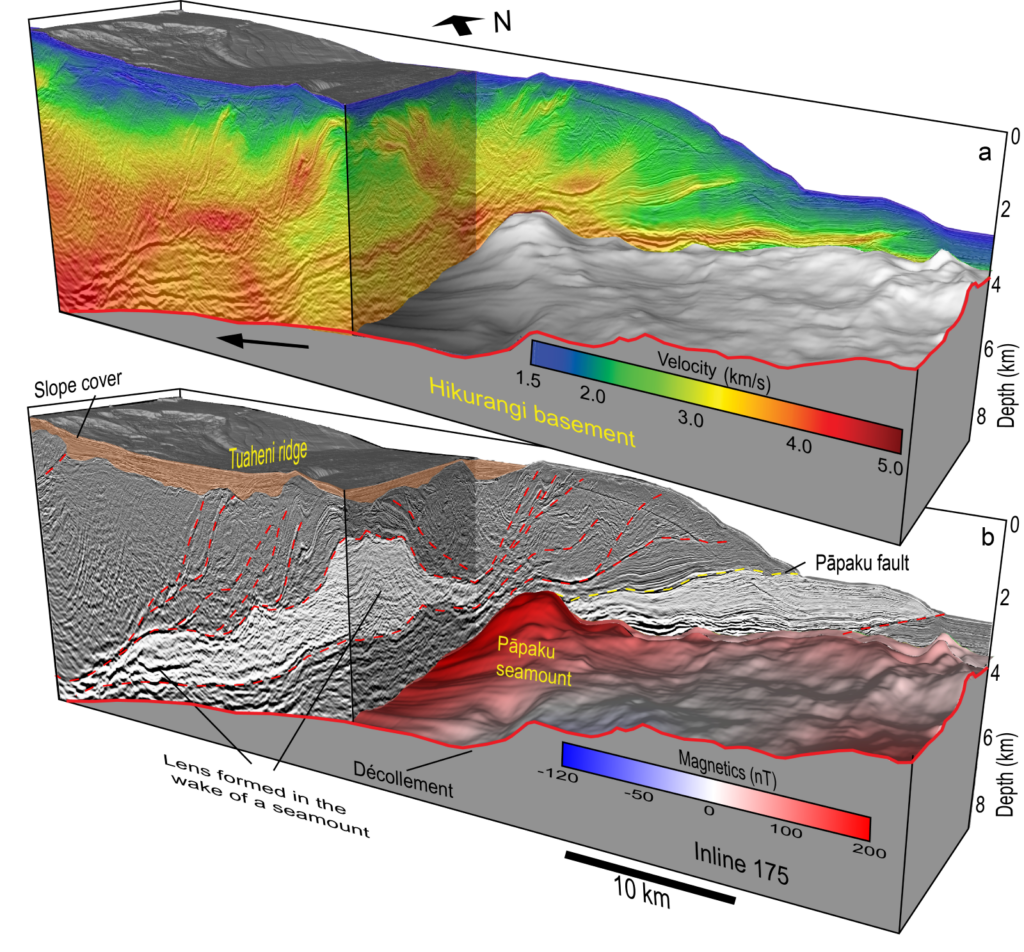September 2, 2022 at 10:30am CST
Speaker: Nathan Bangs, Senior Research Scientist, University of Texas Institute of Geophysics
Host: Shuoshuo Han
Title: A 3D Look at Subducting Seamounts along the N. Hikurangi Margin, New Zealand, and Implications for Fault Slip
Abstract: Subducting seamounts are thought to contribute to slow slip faulting behavior by introducing significant heterogeneity along the plate interface. However, subducting seamounts are challenging to image once they subduct beneath the accretionary wedge, and their impact on upper plate structure and the plate interface has not been well documented and remains poorly understood. In 2018, an international group of researchers deployed 97 ocean bottom seismometers and acquired a 15 x 60 km2, 3D seismic reflection data volume with the R/V Langseth to image the Northern Hikurangi margin in New Zealand, where both shallow slow slip earthquakes and seamount subduction is active. We have now fully processed these 3D data.
Within the northern side of the 3D volume we discovered a seamount subducted ~4 km subseafloor that is ~ 2 km high and ~ 10 km in diameter and has created distinctive structures within the accretionary wedge. We see landslides on the seafloor consistent with uplift and oversteepening from the passing seamount. Emerging from the top of the seamount we see a low-angle, long offset trailing thrust that enabled the upper plate to propagate onto the seafloor for ~15 km and caused a 1.5 – 2.0 km thick lens of low-velocity, and presumably underconsolidated, overpressured sediments, to follow in the wake of the seamount. Similar structural and physical property patterns within the southern half of the 3D volume, suggests another larger seamount has also passed through this region, but it is now deeply subducted. In this presentation, I will show the structural and hydrogeologic implications of seamount collision and suggest how they may contribute to slow slip.


